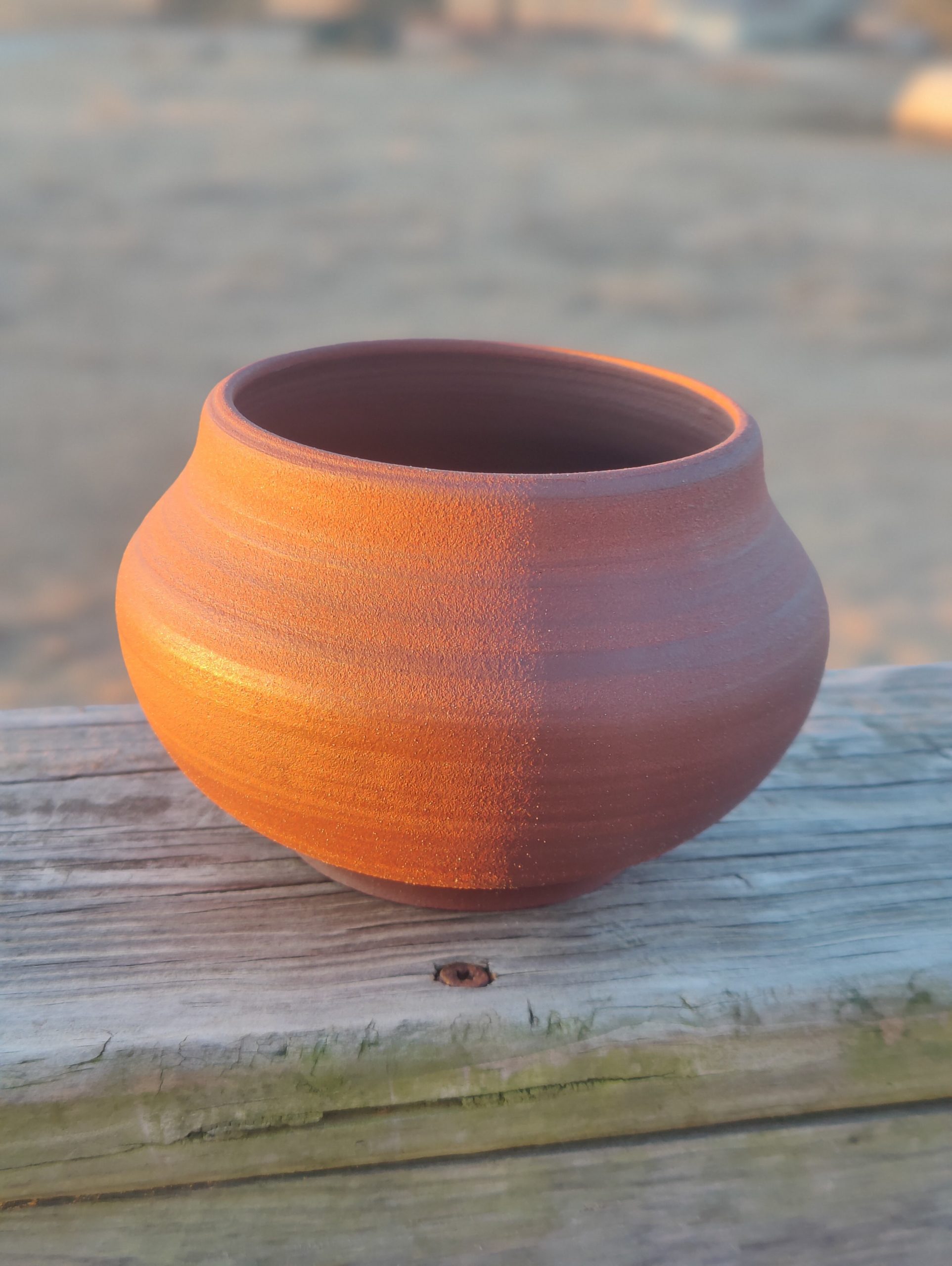EDIT: Fired porosity tested as 2.8%. That’s about perfect as I can fire a bit hotter, and it gives me a bit of wiggle room for reduction.
Just out of the kiln this morning. Cone 9.5ish according to the cones. Probably would have been a cone 10 if I’d added a hold. First firing with a new thermocouple.
This is the marbled clay from the ditch beside my house that gels horribly when any settling agent is added but stays in suspension forever (months) without something (even with some sand left). I’ve tried vinegar, Epsom Salts, and calcium chloride. I will be trying Darvan next. Darvan is a deflocculant rather than a flocculant. It is a different chemical mechanism and one that doesn’t give as clean a separation, but if it works, it won’t hurt this clay to lose some finer particles.
When I first processed this batch, and it gelled on me, I just added the entire thing to the dewatering tub, even though it was way thinner than what usually goes in the tub. It took months to dewater. (It was in the winter though, processing in the summer probably would have helped via evaporation.)
Tests showed it fired to a perfect cone 6 (less than one percent porosity) but the drying shrinkage was very, very high 15%! I covered a test bowl with plastic and put it in a dresser drawer (my slow dry cabinet) and tried to forget about it for a month. It still cracked. I had saved all the sand that passed through a 100 micron screen, so I added that back. This is the result. The porosity at cone 6 was 8.5%. That’s how much difference a bit of quartz sand can make to the fired porosity of your clay.
The next batch of this clay I dug, I tried to leave more sand and again, I got horrible gelling and no settling and after several months just dumped most of it. If I can work out how to process it, avoiding the gelling and leaving the right amount of sand, it’s a gorgeous clay.
I’ll be starting a porosity test this afternoon.





